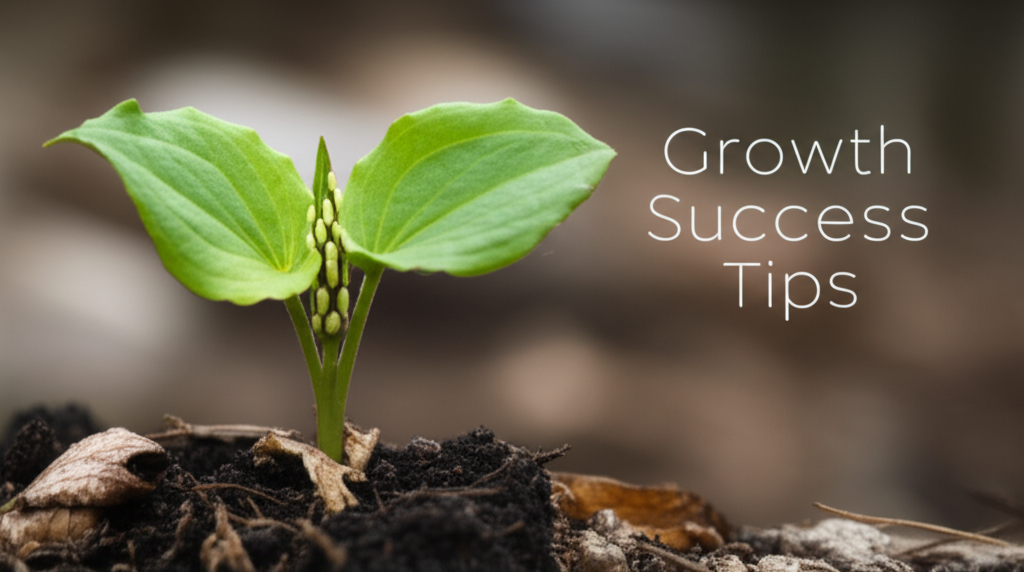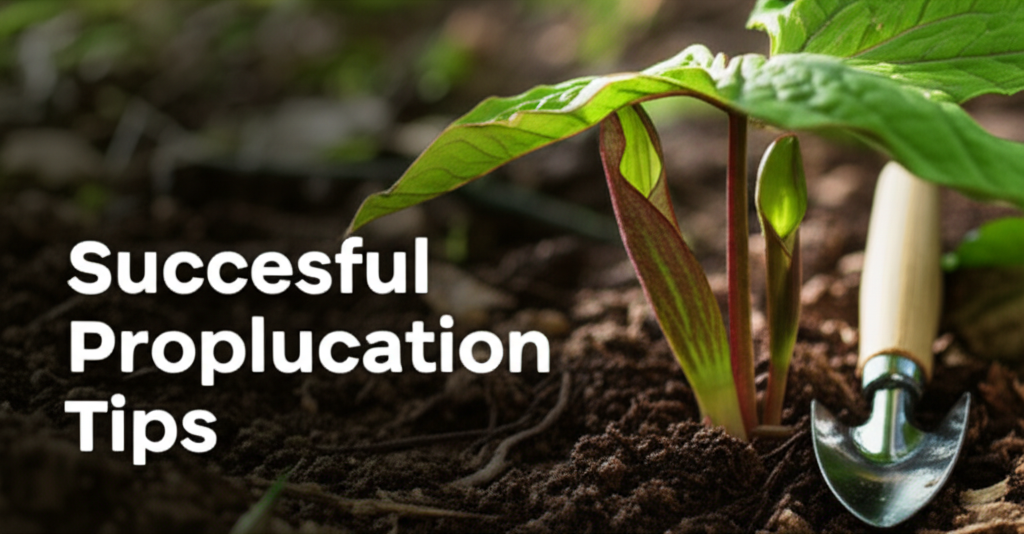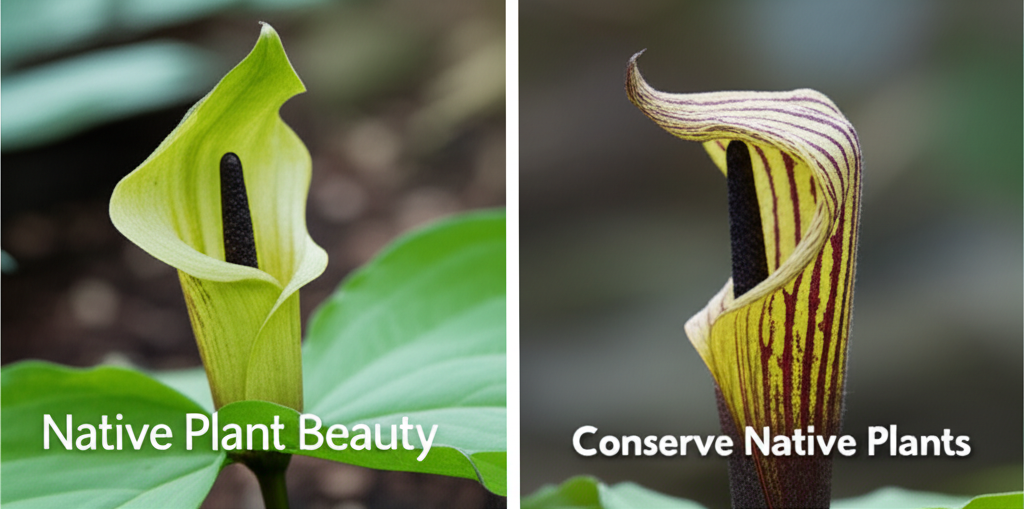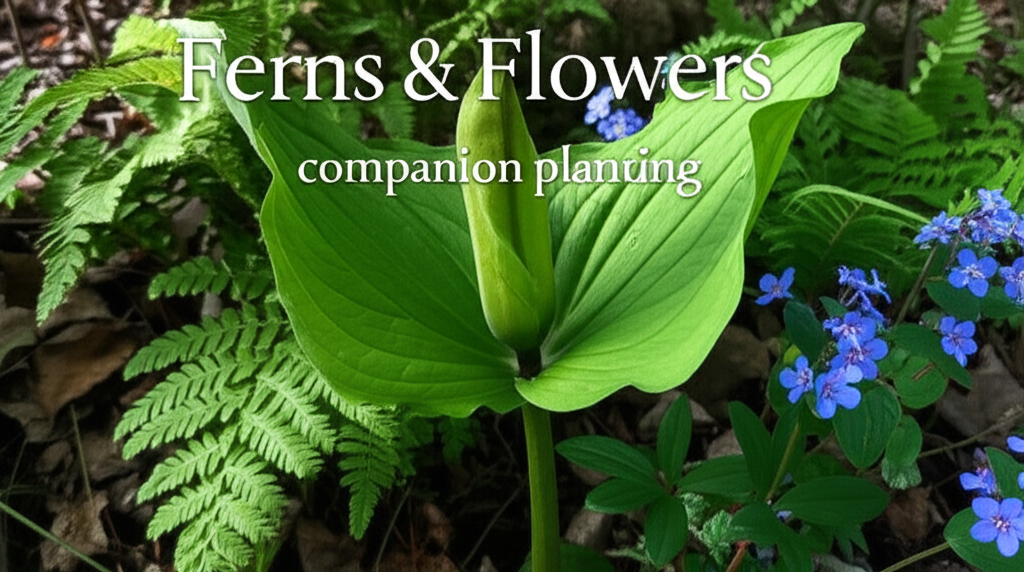Introduction to Jack-in-the-Pulpit Propagation
The Jack-in-the-Pulpit, scientifically known as Arisaema triphyllum, is a captivating native wildflower that adds a unique architectural element to woodland gardens. Its distinctive spathe and spadix structure, resembling a preacher in a pulpit, makes it a sought-after plant for enthusiasts. Propagating this fascinating species can be a rewarding endeavor, allowing gardeners to expand their collection or share these botanical wonders with others. However, like many native plants, Jack-in-the-Pulpit can present certain propagation challenges. This article delves into the intricacies of successful Jack-in-the-Pulpit propagation, focusing on monitoring progress and providing essential tips to overcome common hurdles.
Understanding Jack-in-the-Pulpit Life Cycle and Propagation Methods

Before embarking on propagation, it’s crucial to understand the life cycle of the Jack-in-the-Pulpit. These plants grow from corms, which are essentially underground storage organs. They typically go dormant in the summer heat and re-emerge in the fall or early spring. Understanding this dormancy period is key to successful propagation.
Seed Propagation
Seed propagation is a natural method for Jack-in-the-Pulpit but requires patience. The seeds have a complex germination requirement, often needing a period of stratification (exposure to cold, moist conditions). Seeds are typically produced in the late summer and fall, appearing as bright red berries.
- Collection: Harvest ripe berries from mature plants.
- Processing: Gently remove seeds from the fleshy pulp. Some sources recommend a brief period of warm, moist stratification before cold stratification, mimicking natural conditions.
- Stratification: A common method involves mixing seeds with a moist medium like peat moss or vermiculite, placing them in a sealed plastic bag, and refrigerating for 3-6 months.
- Sowing: Sow stratified seeds in a well-draining seed-starting mix in the fall or early spring.
- Germination: Germination can be erratic and may take several months to a year or more.
Corm Division
Dividing corms is a more direct and generally faster method for propagating established Jack-in-the-Pulpit plants. This is best done when the plant is dormant.
- Timing: The ideal time for corm division is during the plant’s dormant period, typically in late summer or early fall after the foliage has died back, or very early in the spring before new growth emerges.
- Excavation: Carefully dig up the entire plant, taking care not to damage the corm or roots.
- Division: Healthy corms will often have offsets or smaller corms attached. Use a clean, sharp knife or trowel to carefully separate these smaller corms from the parent corm. Ensure each divided piece has at least one bud or growing point.
- Drying: Allow the cut surfaces of the corms to air dry for a day or two in a shaded, well-ventilated area. This helps to prevent rot.
- Replanting: Replant the divided corms immediately in a suitable location or pot.
Layering
While less common, layering can also be a viable propagation method. This involves encouraging root formation on a stem while it is still attached to the parent plant.
- Selection: Choose a healthy stem that is long enough to reach the soil surface.
- Preparation: Bend the stem down and make a small incision or scrape on the underside of the stem where it will contact the soil.
- Anchoring: Secure the wounded section of the stem to the soil surface using a bent wire or a small stone.
- Covering: Cover the wounded area with moist soil or a potting mix.
- Rooting: Keep the area consistently moist. Roots should begin to form within a few weeks to months.
- Separation: Once sufficient roots have developed, the layered stem can be carefully severed from the parent plant and transplanted.
Monitoring Propagation Success
Effective monitoring is crucial for understanding how your propagation efforts are progressing and for identifying any issues early on. This involves careful observation of visual cues and environmental conditions.
Seed Germination Monitoring
For seed propagation, monitoring involves observing the germination medium for signs of life.
- Visual Inspection: Regularly check the surface of the soil for tiny seedlings emerging. This can take a significant amount of time, so patience is key.
- Moisture Levels: Ensure the soil remains consistently moist but not waterlogged. Overwatering can lead to damping-off disease, which can kill delicate seedlings.
- Temperature Fluctuations: While germination can occur over a range of temperatures, consistent, cool conditions are generally preferred after stratification.
- Light Exposure: Once seedlings emerge, they will require bright, indirect light.
Corm Division Monitoring
Monitoring corm division focuses on the recovery and establishment of the divided pieces.
- Initial Replanting: After replanting divided corms, ensure they are planted at the appropriate depth, typically with the top of the corm just below the soil surface.
- Moisture: Keep the soil consistently moist but well-drained. Avoid letting the soil dry out completely, as this can stress the newly planted corms.
- Signs of Growth: Look for the emergence of new leaves from the soil surface. This is the primary indicator of successful root establishment. The timeframe for this can vary, but typically ranges from a few weeks to a couple of months.
- Rot/Disease: Inspect the planted corms for any signs of rot, mold, or unusual discoloration. If rot is detected, it may be necessary to carefully excavate the corm, remove the affected tissue with a clean knife, and replant in fresh, well-draining soil.
Layering Progress Monitoring
Monitoring layered stems involves checking for root development.
- Root Formation: Gently tug on the layered stem. If there is resistance, it indicates root development.
- Visual Cues: In some cases, you might be able to see roots emerging from the soil around the wounded area.
- Moisture: Continually monitor and maintain moisture levels around the layered section.
Key Factors for Jack-in-the-Pulpit Propagation Success
Several critical factors contribute to a high success rate in propagating Jack-in-the-Pulpit. Addressing these elements proactively will significantly improve your chances.
Soil and Drainage
Jack-in-the-Pulpit thrives in rich, moist, well-draining soil. Mimicking this native habitat is paramount for successful propagation.
- Ideal Mix: A good potting mix for propagation includes compost, leaf mold, and a coarser material like perlite or coarse sand to ensure adequate drainage.
- Container Drainage: If using pots, ensure they have ample drainage holes to prevent waterlogging, which can lead to corm rot.
- In-Ground Planting: When planting divisions directly into the garden, amend the soil with organic matter and ensure the site doesn’t hold standing water.
Moisture and Watering
Consistent moisture is vital, especially during the initial establishment phase. However, overwatering is a common pitfall.
- Consistency: Aim for soil that is consistently moist, akin to a wrung-out sponge.
- Avoid Waterlogging: Never let the pots or planting beds sit in standing water.
- Watering Frequency: The frequency of watering will depend on environmental conditions such as temperature, humidity, and the size of the plant or seedling.
Light and Temperature
Jack-in-the-Pulpit prefers shady or partially shaded conditions. Extreme temperatures can hinder propagation.
- Light: Provide bright, indirect light for seedlings and newly divided corms. Direct sunlight can scorch delicate new growth. Established plants typically prefer dappled shade.
- Temperature: For seed germination and corm division, consistent, moderate temperatures are best. Avoid extreme heat or cold during the initial rooting or sprouting phases. Many seeds require cold stratification, so a period in refrigeration is essential.
Patience and Timing
This is perhaps the most crucial element for Jack-in-the-Pulpit propagation. These plants operate on their own biological clock.
- Seed Germination: Be prepared for a long wait. Some seeds may take over a year to germinate.
- Corm Establishment: Even with successful division, it may take a year or two for a divided corm to reach its full potential and produce a flower stalk.
- Dormancy: Respect the plant’s dormancy. Attempting to propagate or transplant during active growth can be detrimental.
Troubleshooting Common Jack-in-the-Pulpit Propagation Issues
Even with careful attention, propagation challenges can arise. Identifying and addressing these issues promptly is key to saving your propagation efforts.
Issue: No Germination or Slow Growth from Seed
- Possible Causes: Incomplete stratification, improper seed viability, unsuitable temperature or moisture.
- Solutions: Ensure seeds have undergone the full recommended stratification period. Test seed viability by soaking a small sample in water; viable seeds will sink. Adjust temperature and moisture conditions. Consider sowing seeds in different batches to account for varying germination times.
Issue: Rotting Corms or Seedlings
- Possible Causes: Overwatering, poor drainage, fungal pathogens.
- Solutions: Improve drainage by amending soil with perlite or sand. Reduce watering frequency, allowing the soil surface to dry slightly between waterings. For corms, remove any rotten sections with a sterile knife and replant in fresh, well-draining media. In severe cases, affected pots or media may need to be discarded and sterilized. Fungicides can be used as a preventative measure in susceptible conditions.
Issue: Corms Fail to Emerge After Division
- Possible Causes: Corms were too small, damaged during division, planted too deep or too shallow, or not viable.
- Solutions: Ensure only healthy, sufficiently sized corms are divided. Handle corms gently. Verify correct planting depth. If you suspect non-viability, gently excavate a few to check for signs of rot or life.
Issue: Seedlings are Weak and Leggy
- Possible Causes: Insufficient light, too much heat.
- Solutions: Move seedlings to a brighter location with indirect light. Reduce ambient temperature if possible.
Key Facts and Comparison of Propagation Methods
Understanding the trade-offs between different propagation methods can help you choose the most suitable approach for your circumstances.
| Feature | Seed Propagation | Corm Division | Layering |
|---|---|---|---|
| Success Rate | Variable, can be low without proper stratification | High for healthy corms | Moderate to High |
| Time to Maturity | Very long (3-7+ years to flowering) | Moderate (1-3 years to flowering) | Moderate (2-4 years to flowering) |
| Effort Required | Low initial effort, high patience | Moderate, requires careful digging and division | Low to Moderate, ongoing monitoring |
| Genetic Diversity | High, creates new genetic variations | Low, creates clones of parent | Low, creates clones of parent |
| Best For | Expanding species range, creating new genetic lines | Propagating desired specimens, increasing plant numbers quickly | Propagating specific, healthy parent plants |
Steps for Propagation and Associated Pros/Cons
This table summarizes the key steps involved in each propagation method and highlights their advantages and disadvantages.
| Method | Steps | Pros | Cons |
|---|---|---|---|
| Seed Propagation | 1. Collect ripe seeds. 2. Stratify seeds (cold moist period). 3. Sow in well-draining mix. 4. Maintain moisture and cool temperatures. 5. Wait patiently for germination. |
Produces true-to-type plants (if self-pollinated), promotes genetic diversity, can yield many plants from one parent. | Very slow germination and growth, requires specific stratification, variable success rates, long wait for flowering. |
| Corm Division | 1. Dig up dormant corms. 2. Separate offsets from parent corm. 3. Allow cut surfaces to dry. 4. Replant divided corms in well-draining soil. 5. Maintain consistent moisture. |
Faster than seed propagation, ensures offspring are identical to parent, relatively high success rate with healthy corms. | Requires digging up established plants, risk of damaging corms, limited by the number of offsets produced. |
| Layering | 1. Select a healthy stem. 2. Bend stem and wound underside. 3. Anchor stem to soil. 4. Cover wounded area with moist soil. 5. Keep moist until roots form. 6. Separate rooted layer. |
Less disruptive to parent plant, can be done on established plants, often results in well-rooted offspring. | Can be time-consuming, only one or a few layers per stem, not suitable for all plant structures, still requires patience for root development. |
Conclusion
Propagating Jack-in-the-Pulpit can be a deeply satisfying experience, allowing you to connect with this unique native plant on a new level. By understanding its life cycle, employing appropriate propagation techniques, and diligently monitoring your efforts, you can significantly increase your chances of success. Remember that patience is a gardener’s virtue, especially when working with species like Arisaema triphyllum. With careful attention to soil, moisture, light, and temperature, and by troubleshooting common issues proactively, you’ll be well on your way to cultivating a thriving Jack-in-the-Pulpit population in your own woodland garden.


